Strategies and Tactics
STRATEGY 2.1: Build collections and conduct digitization initiatives with global, hemispheric, and local partners to meet the teaching, learning, research, and clinical care needs of the University community.
- TACTIC 2.1.1 -- Plan for and begin processing the Kislak Collection of the Early Americas, Exploration and Navigation prior to its arrival at UM.
- TACTIC 2.1.2 -- Develop a systematic collections assessment and management strategy, including usage analysis, to support collection development, management, and digitization decisions.
- TACTIC 2.1.3 -- Establishment of Libraries-based Critical Cataloging and Inclusive Metadata Remediation Working Group.
- TACTIC 2.1.4 -- Establish Curatorial and Budget Commitments to Diversifying Collections Across Disciplines.
- TACTIC 2.1.5 -- Develop a Harmful Content Statement.
TACTIC 2.1.1
Reflects a commitment to promoting education, preserving cultural heritage, fostering innovation, and advancing partnerships for sustainable development.
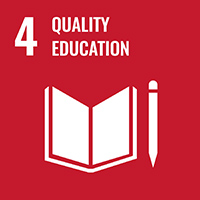 |
Goal 4: Quality Education By processing the Kislak Collection, the organization contributes to quality education by making historical materials accessible for research and learning purposes and enriching educational experiences for students and scholars. |
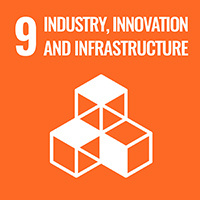 |
Goal 9: Industry, Innovation, and Infrastructure Processing the collection reflects innovation in archival practices and infrastructure development, ensuring efficient management and preservation of cultural heritage materials. |
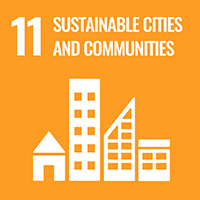 |
Goal 11: Sustainable Cities and Communities The initiative supports the goal of sustainable cities and communities by preserving cultural heritage and promoting access to historical resources, which enriches community life and fosters a sense of belonging and identity. |
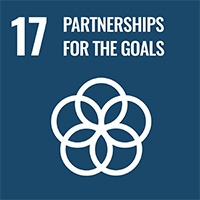 |
Goal 17: Partnerships for the Goals Collaborating with the Kislak Collection and initiating processing efforts prior to its arrival demonstrates partnerships for sustainable development. By working together, stakeholders can leverage expertise and resources to achieve shared goals related to education and cultural heritage preservation. |
TACTIC 2.1.2
Reflects a commitment to optimizing library resources, fostering innovation in library services, and supporting educational goals within the broader context of sustainable development.
 |
Goal 4: Quality Education Ensures that library collections are strategically developed and managed to meet the educational needs of the community. Usage analysis helps in optimizing the relevance and effectiveness of educational resources. |
 |
Goal 9: Industry, Innovation, and Infrastructure Developing a systematic strategy for collections assessment and management aligns with the goal of promoting innovation and creating efficient infrastructure within library services and involves leveraging technology for usage analysis and digitization. |
 |
Goal 11: Sustainable Cities and Communities Contributes to creating sustainable and inclusive communities by optimizing library resources and ensuring that the collections are responsive to the evolving needs of the community. |
 |
Goal 17: Partnerships for the Goals Reflects a commitment to collaborative efforts in managing and developing collections. |
TACTIC 2.1.3
Underscores the importance of promoting ethical and inclusive practices in information organization and access to support the diverse needs and perspectives of library users and communities.
 |
Goal 4: Quality Education Promotes equitable access to educational resources and supports lifelong learning for all. |
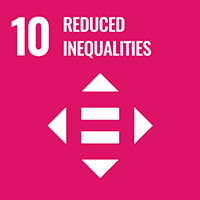 |
Goal 10: Reduced Inequalities Addressing biases and gaps in cataloging and metadata helps reduce inequalities by ensuring that marginalized communities and perspectives are represented and recognized in library collections. |
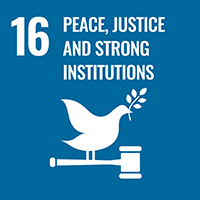 |
Goal 16: Peace, Justice, and Strong Institutions By advocating for more equitable and ethical cataloging practices, the initiative fosters transparency, accountability, and trust within library systems and institutions. |
TACTIC 2.1.4
Underscores the importance of actively promoting diversity and inclusivity in library collections to support the educational, research, and cultural enrichment needs of diverse communities.
 |
Goal 4: Quality Education Enhances the quality of education by ensuring that students have access to a wide range of perspectives, voices, and sources of knowledge. |
 |
Goal 10: Reduced Inequalities Helps reduce inequalities by ensuring that marginalized and underrepresented voices are represented and valued in library collections. By actively seeking out materials from diverse authors, communities, and perspectives, libraries can help address disparities in access to information and promote greater equity in education and research. |
 |
Goal 16: Peace, Justice, and Strong Institutions By actively curating collections that reflect the diversity of human experiences and perspectives, libraries can foster understanding, empathy, and dialogue across different cultures, identities, and communities, promoting peace, justice, and strong institutions. |
TACTIC 2.1.5
Establishing clear standards for addressing harmful content, organizations can contribute to creating safer, more equitable, and more inclusive online environments for all users.
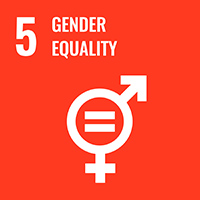 |
Goal 5: Gender Equality By explicitly prohibiting harmful content that perpetuates misogyny, sexism, or gender-based violence, organizations can create safer and more inclusive digital spaces for women and gender minorities. |
 |
Goal 10: Reduced Inequalities Can help reduce inequalities by addressing discriminatory or hateful content that targets marginalized groups, including racial, ethnic, religious, and LGBTQ+ communities. By establishing clear guidelines for addressing harmful content, organizations can work to mitigate the impact of online harassment, discrimination, and hate speech on vulnerable populations. |
 |
Goal 16: Peace, Justice, and Strong Institutions Promotes accountability, transparency, and ethical standards within institutions, particularly in digital spaces. By clearly articulating guidelines for addressing harmful content, organizations can uphold principles of justice, protect users from harm, and foster trust in their platforms and services. |
STRATEGY 2.2: Facilitate seamless discovery of and access to University cultural property, library collections and institutional repository content.
- TACTIC 2.2.1 -- Include Lowe Art Museum collections in the uSearch interface.
- TACTIC 2.2.2 -- Include library repositories (AToM, CONTENTdm, Digital Commons) in the uSearch interface.
- TACTIC 2.2.3 -- Test and pilot digital collection management systems to replace CONTENTdm.
- TACTIC 2.2.4 -- Go live as a Digital Public Library of America (DPLA) South Florida service hub.
- TACTIC 2.2.5 -- Initiate OCLC Reclamation for library collections to ensure accurate representation of UM holdings in the WorldCat database, facilitating interlibrary loan and discovery services.
- TACTIC 2.2.6 -- Explore and adopt software (e.g., SNAC Social Networks and Archival Context) and processing workflows that when implemented will routinely expose special collections to Wikipedia and other search engines.
- TACTIC 2.2.7 -- Establishment of the Exhibitions Council
- TACTIC 2.2.8 -- Exhibits Program
TACTIC 2.2.1
Reflects a commitment to enriching cultural experiences, promoting education, and fostering innovation in information access.
 |
Goal 4: Quality Education Contributes to quality education by providing students, researchers, and the community with enhanced access to diverse cultural and artistic resources for educational purposes. |
 |
Goal 9: Industry, Innovation, and Infrastructure Reflects a commitment to innovation in information infrastructure, aligning with the goal of promoting innovation and efficient infrastructure development for accessing cultural content. |
 |
Goal 11: Sustainable Cities and Communities Contributes to creating sustainable and inclusive communities by providing a platform for residents, students, and visitors to engage with and appreciate cultural heritage. |
 |
Goal 17: Partnerships for the Goals Involved collaboration and partnerships between the museum and the library community, fostering a collaborative approach to making cultural resources more accessible. |
TACTIC 2.2.2
Demonstrates a commitment to promoting education, fostering technological innovation, enhancing information accessibility, and advancing partnerships for sustainable development.
 |
Goal 4: Quality Education By incorporating library repositories into the uSearch interface, educational resources become more accessible to students, researchers, and the community. Contributing to the goal of quality education by providing easy access to diverse learning materials. |
 |
Goal 9: Industry, Innovation, and Infrastructure This initiative reflects innovation in information infrastructure by integrating diverse library repositories into a unified search interface. It aligns with the goal of promoting innovation and efficient infrastructure development for accessing educational resources. |
 |
Goal 11: Sustainable Cities and Communities Making library repositories accessible through uSearch supports the creation of sustainable and inclusive communities by providing centralized access to information resources, which can foster lifelong learning and community engagement. |
 |
Goal 17: Partnerships for the Goals Collaborating with library repositories and integrating them into the uSearch interface involves partnerships for sustainable development. By working together, stakeholders can enhance information accessibility and promote knowledge sharing for societal advancement. |
TACTIC 2.2.3
Demonstrates a commitment to fostering technological innovation, enhancing information accessibility, and promoting partnerships for sustainable development.
 |
Goal 4: Quality Education By implementing new digital collection management systems, educational resources become more accessible and easier to manage. This supports the goal of quality education by providing educators, students, and researchers with improved access to diverse learning materials. |
 |
Goal 9: Industry, Innovation, and Infrastructure Testing and piloting digital collection management systems reflect innovation in information infrastructure. It aligns with the goal of promoting innovation and the development of efficient technological solutions for managing digital collections. |
 |
Goal 11: Sustainable Cities and Communities The adoption of more efficient and user-friendly digital collection management systems enhances access to information resources, contributing to the creation of sustainable and inclusive communities. This can foster knowledge sharing and lifelong learning within communities. |
 |
Goal 17: Partnerships for the Goals Collaborating with stakeholders and piloting new digital collection management systems involves partnerships for sustainable development. By working together, stakeholders can leverage expertise and resources to implement effective solutions for managing digital collections. |
TACTIC 2.2.4
Demonstrates a commitment to promoting education, fostering technological innovation, enhancing information accessibility, and promoting partnerships for sustainable development, as outlined in the United Nations Sustainable Development Goals.
 |
Goal 4: Quality Education Going live as a DPLA service hub enhances access to educational resources by providing a centralized platform for accessing digital collections. This supports the goal of quality education by making diverse learning materials more accessible to students, educators, and researchers. |
 |
Goal 9: Industry, Innovation, and Infrastructure Becoming a DPLA service hub reflects innovation in information infrastructure. It aligns with the goal of promoting innovation and the development of efficient technological solutions for sharing and accessing digital content. |
 |
Goal 11: Sustainable Cities and Communities Serving as a DPLA service hub contributes to creating sustainable and inclusive communities by enhancing access to digital resources. This can foster knowledge sharing and lifelong learning, promoting community development and cohesion. |
 |
Goal 17: Partnerships for the Goals Collaborating with DPLA and becoming a service hub involves partnerships for sustainable development. By working together, stakeholders can leverage expertise and resources to enhance access to digital collections and promote information sharing for societal advancement. |
TACTIC 2.2.5
Demonstrates a commitment to promoting education, fostering technological innovation, enhancing access to information, and promoting partnerships for sustainable development.
 |
Goal 4: Quality Education By ensuring accurate representation of UM holdings in the WorldCat database, this initiative contributes to quality education by facilitating access to a broader range of educational resources for students, researchers, and educators. |
 |
Goal 9: Industry, Innovation, and Infrastructure Initiating OCLC Reclamation reflects innovation in library cataloging infrastructure. It aligns with the goal of promoting innovation and the development of efficient technological solutions for enhancing access to information resources. |
 |
Goal 11: Sustainable Cities and Communities Accurate representation of UM holdings in the WorldCat database supports the goal of sustainable cities and communities by enhancing access to information resources. This can foster knowledge sharing, research collaboration, and community engagement within and beyond the university. |
 |
Goal 17: Partnerships for the Goals Collaborating with OCLC and initiating Reclamation involves partnerships for sustainable development. By working together, stakeholders can ensure accurate representation of library collections in global databases, promoting information sharing and collaboration for societal advancement. |
TACTIC 2.2.6
Demonstrates a commitment to promoting education, fostering technological innovation, enhancing access to information, and promoting partnerships for sustainable development. Additionally, it underscores considerations regarding copyright and public domain issues when exposing collections to Wikipedia and other search engines, reflecting a commitment to responsible and ethical information dissemination.
 |
Goal 4: Quality Education Routinely exposing special collections to Wikipedia and other search engines enhances access to educational resources, contributing to quality education by providing students, researchers, and educators access to diverse and relevant materials. |
 |
Goal 9: Industry, Innovation, and Infrastructure Reflects innovation in information infrastructure and aligns with the goal of promoting innovation and the development of efficient technological solutions to enhance access to information resources. |
 |
Goal 11: Sustainable Cities and Communities Exposing special collections to Wikipedia and search engines supports the goal of sustainable cities and communities by enhancing access to information resources. This can foster knowledge sharing, research collaboration, and community engagement, contributing to community development and cohesion. |
 |
Goal 17: Partnerships for the Goals By working together, stakeholders can leverage expertise and resources to enhance access to special collections and promote information sharing and collaboration for societal advancement. |
TACTIC 2.2.7
By establishing an Exhibitions Council, the Libraries can ensure that exhibitions are thoughtfully curated, inclusive, and impactful, benefiting the entire community.
 |
Goal 4: Quality Education Can enhance educational opportunities by organizing and curating exhibitions that provide learning experiences for students, faculty, and the broader community. These exhibitions can cover a wide range of topics, contributing to the enrichment of the educational environment. |
 |
Goal 10: Reduced Inequalities Promotes the inclusion of underrepresented groups and voices in the narratives presented, fostering a more inclusive and equitable environment. |
 |
Goal 16: Peace, Justice, and Strong Institutions Ensures that exhibitions are curated with input from diverse stakeholders, thereby strengthening the institution's commitment to justice and inclusivity. |
 |
Goal 17: Partnerships for the Goals Facilitates partnerships with other cultural, educational, and community organizations. Collaborations can enhance the quality and reach of exhibitions, fostering a network of shared resources and expertise. |
TACTIC 2.2.8
Underscores the organization's dedication to advancing quality education, reducing inequalities, fostering inclusive and strong institutions, and building meaningful partnerships.
 |
Goal 4: Quality Education Can significantly enhance educational opportunities by showcasing diverse and informative exhibitions. These exhibitions provide rich, immersive learning experiences for students, faculty, and the broader community, contributing to lifelong learning and intellectual growth. |
 |
Goal 10: Reduced Inequalities By ensuring that exhibits represent a wide range of cultures, histories, and perspectives, the program can help reduce inequalities. This initiative promotes the inclusion of underrepresented groups and voices, fostering a more inclusive and equitable environment. |
 |
Goal 16: Peace, Justice, and Strong Institutions A well-curated exhibits program promotes transparency, accountability, and inclusivity in its planning and execution. Exhibitions can highlight themes of justice, human rights, and social equity, thereby strengthening the Libraries' commitment to these values. |
 |
Goal 17: Partnerships for the Goals An exhibits program often involves collaboration with other cultural, educational, and community organizations. These partnerships can enhance the quality and reach of exhibitions, fostering a network of shared resources and expertise. |
STRATEGY 2.3: Enable and lead the transformative use of print and digital collections.
- TACTIC 2.3.1 -- Implement the Mellon Foundation-Funded project "CREATE- Leveraging Cultural Resources through Intra-Institutional Collaboration."
- TACTIC 2.3.2 -- Assess and potentially expand our effort to make digital collections more available for computational uses (such as the La Gaceta project).
TACTIC 2.3.1
Reflects a commitment to promoting education, preserving cultural heritage, fostering partnership building, and strengthening institutions within the context of sustainable development.
 |
Goal 4: Quality Education The project aims to leverage cultural resources for educational purposes, enhancing access to diverse learning materials and promoting experiential learning opportunities for students. This aligns with the goal of quality education by providing enriched educational experiences. |
 |
Goal 11: Sustainable Cities and Communities The project contributes to creating sustainable and inclusive communities by leveraging cultural resources within the institution. It fosters collaboration and engagement across different departments and disciplines, enriching community life and promoting cultural diversity. |
 |
Goal 16: Peace, Justice, and Strong Institutions Leveraging cultural resources through intra-institutional collaboration can contribute to building strong institutions by promoting cultural understanding and appreciation. It fosters dialogue, respect for diversity, and the preservation of cultural heritage within the institution. |
 |
Goal 17: Partnerships for the Goals The project emphasizes intra-institutional collaboration, bringing together various departments and stakeholders within the institution. By fostering partnerships and collaboration, it supports the goal of partnerships for sustainable development, promoting collective action to achieve shared goals. |
TACTIC 2.3.2
Demonstrates a commitment to promoting education, fostering technological innovation, enhancing access to information, and promoting partnerships for sustainable development. Additionally, it underscores the potential for computational analysis to contribute to advancements in health and well-being, reflecting broader societal benefits.
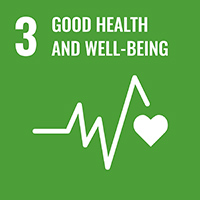 |
Goal 3: Good Health and Well-Being Utilizing digital collections for computational analyses can contribute to advancements in health and well-being by enabling researchers to analyze large datasets for medical research, epidemiological studies, and public health interventions. |
 |
Goal 4: Quality Education Making digital collections available for computational uses enhances access to educational resources, contributing to quality education by providing students, researchers, and educators with opportunities for data-driven learning and research. |
 |
Goal 9: Industry, Innovation, and Infrastructure Expanding efforts to make digital collections available for computational uses reflects innovation in information infrastructure. It aligns with the goal of promoting innovation and the development of efficient technological solutions for leveraging digital resources. |
 |
Goal 17: Partnerships for the Goals By working together, stakeholders can leverage expertise and resources to enhance access to digital collections for computational uses, promoting innovation and knowledge sharing for societal advancement. |
STRATEGY 2.4: Ensure the long-term preservation of print and digital collections.
- TACTIC 2.4.1 -- Ensure all appropriate digital collections are preserved in the APTrust.
- TACTIC 2.4.2 -- Test and document current local digital preservation infrastructure.
TACTIC 2.4.1
Reflects a commitment to promoting education, fostering technological innovation, enhancing access to information, and promoting partnerships for sustainable development. Additionally, it underscores the importance of preserving digital resources for future generations, reflecting a broader commitment to the stewardship of cultural heritage and knowledge.
 |
Goal 4: Quality Education Ensuring the preservation of digital collections in the APTrust enhances access to educational resources, contributing to quality education by providing students, researchers, and educators with access to diverse and reliable learning materials. |
 |
Goal 9: Industry, Innovation, and Infrastructure Utilizing the APTrust for digital preservation reflects innovation in information infrastructure. It aligns with the goal of promoting innovation and the development of efficient technological solutions for preserving digital resources and ensuring their long-term accessibility. |
 |
Goal 16: Peace, Justice, and Strong Institutions Preserving digital collections in the APTrust contributes to building strong institutions by promoting transparency, accountability, and access to information. It ensures the long-term availability of valuable digital resources, supporting research, education, and cultural heritage preservation. |
 |
Goal 17: Partnerships for the Goals Collaborating with the APTrust involves partnerships for sustainable development. By working together, stakeholders can leverage expertise and resources to ensure the preservation of digital collections, promoting information sharing and collaboration for societal advancement. |
TACTIC 2.4.2
Demonstrates a commitment to promoting education, fostering technological innovation, enhancing access to information, and promoting partnerships for sustainable development. Additionally, it underscores the importance of preserving digital resources for future generations, reflecting a broader commitment to the stewardship of cultural heritage and knowledge.
 |
Goal 4: Quality Education Enhances access to educational resources by ensuring the long-term preservation of digital materials. This contributes to quality education by providing students, researchers, and educators with reliable and accessible learning materials. |
 |
Goal 9: Industry, Innovation, and Infrastructure It aligns with the goal of promoting innovation and the development of efficient technological solutions for preserving digital resources and ensuring their long-term accessibility. |
 |
Goal 11: Sustainable Cities and Communities Contributes to creating sustainable and resilient communities by safeguarding valuable digital resources. This can foster knowledge sharing, research collaboration, and community engagement, promoting community development and cohesion. |
 |
Goal 17: Partnerships for the Goals Collaborating with stakeholders to test and document the local digital preservation infrastructure involves partnerships for sustainable development. By working together, stakeholders can leverage expertise and resources to ensure the effectiveness and sustainability of digital preservation efforts. |
STRATEGY 2.5: Increase international engagement at both organizational and individual levels.
- TACTIC 2.5.1 -- Host IATUL (Int'l Association of University Libraries) 2022 annual meeting and regional summits.
- TACTIC 2.5.2 -- Enhance faculty awareness of international professional development opportunities and review travel funding support.
- TACTIC 2.5.3 -- Establish "Library Network" within the Hemispheric University Consortium (HUC) in order to facilitate HUC goals and global engagement.
TACTIC 2.5.1
Reflects a commitment to promoting education, fostering partnerships, encouraging innovation, and building sustainable communities. Additionally, it underscores the importance of international collaboration and knowledge sharing in advancing the goals of academic libraries and supporting global research and education initiatives.
 |
Goal 4: Quality Education Hosting the IATUL annual meeting and regional summits provides a platform for knowledge exchange, professional development, and collaboration among university librarians worldwide. This contributes to quality education by fostering continuous learning and innovation within the academic community. |
 |
Goal 9: Industry, Innovation, and Infrastructure Provides a forum for discussing innovations in library services, technologies, and infrastructure. By hosting these events, institutions can promote innovation and best practices in library management, information access, and scholarly communication. |
 |
Goal 11: Sustainable Cities and Communities Hosting international meetings contributes to building sustainable and inclusive communities by fostering cultural exchange, collaboration, and mutual understanding among participants from different regions and backgrounds. These events can also stimulate local economies and promote tourism, contributing to the vitality of host cities. |
 |
Goal 17: Partnerships for the Goals Promotes partnerships for sustainable development by bringing together stakeholders from diverse backgrounds to share expertise, best practices, and resources. These partnerships facilitate collective action toward achieving common goals, such as advancing library services and supporting research and education. |
TACTIC 2.5.2
Demonstrates a commitment to promoting education, fostering partnerships, encouraging innovation, and supporting economic growth. Additionally, it underscores the importance of international collaboration and knowledge exchange in advancing academic excellence and addressing global challenges.
 |
Goal 4: Quality Education Contributes to quality education by providing educators with opportunities for continuous learning and professional growth. Exposure to international perspectives, practices, and collaborations can enrich teaching and research, ultimately benefiting students. |
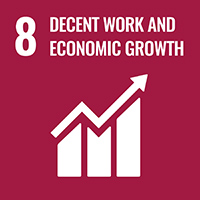 |
Goal 8: Decent Work and Economic Growth Supporting faculty participation in international professional development enhances human capital development and promotes economic growth by equipping educators with the skills, knowledge, and networks needed to excel in their fields. This can lead to increased productivity, innovation, and competitiveness in the global marketplace. |
 |
Goal 9: Industry, Innovation, and Infrastructure Stimulates innovation and supports the development of a diverse and globally engaged academic workforce. Exposure to different cultures, research methodologies, and educational practices can inspire new ideas and approaches, driving innovation in teaching, research, and institutional management. |
 |
Goal 17: Partnerships for the Goals Reviewing travel funding support for faculty participation in international professional development fosters partnerships for sustainable development by promoting collaboration and knowledge exchange across borders. Partnerships between academic institutions, funding agencies, and professional organizations can facilitate access to international opportunities and resources. |
TACTIC 2.5.3
Reflects a commitment to promoting education, fostering partnerships, encouraging innovation, and building sustainable communities. Additionally, it underscores the importance of collaborative efforts among academic libraries in advancing the goals of higher education and supporting global engagement.
 |
Goal 4: Quality Education Can contribute to quality education by promoting access to diverse educational resources and fostering collaboration among member institutions. By sharing knowledge, expertise, and resources, the network can enhance teaching, research, and learning outcomes for students and faculty. |
 |
Goal 9: Industry, Innovation, and Infrastructure The Library Network can foster innovation in information infrastructure and library services by promoting the adoption of best practices, technologies, and standards across member institutions. By investing in modern library infrastructure and digital resources, the network can support the evolving needs of students, researchers, and communities. |
 |
Goal 11: Sustainable Cities and Communities Contributes to building sustainable and inclusive communities by promoting knowledge sharing, research collaboration, and cultural exchange among member institutions. By strengthening academic libraries, the network can support the intellectual and cultural vitality of local communities and contribute to regional development. |
 |
Goal 17: Partnerships for the Goals Promotes partnerships for sustainable development by bringing together academic libraries from different regions to collaborate on shared goals and initiatives. By leveraging collective expertise and resources, the network can address common challenges, such as enhancing information access, preserving cultural heritage, and promoting digital literacy. |
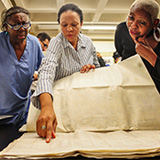
Resource for Hemispheric and Global Knowledge
100%
5 Strategies
20 Tactics
= Learn how these tactics align with the United Nations Sustainable Development Goals